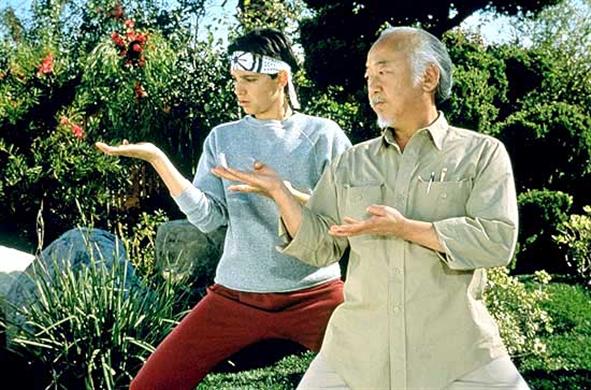 Recruiting is not the only way to build a diverse and inclusive staff – and it’s not necessarily the best way – especially if your new recruits enter a team that’s not inclusive. Unless you’ve committed to assessing your existing organizational culture and making necessary changes, you could be setting new hires and your organization up for failure.
Recruiting is not the only way to build a diverse and inclusive staff – and it’s not necessarily the best way – especially if your new recruits enter a team that’s not inclusive. Unless you’ve committed to assessing your existing organizational culture and making necessary changes, you could be setting new hires and your organization up for failure.
One way to assure your existing organizational culture will support a diverse staff is by developing your existing team – starting with providing targeted support and mentorship.
Employees from marginalized communities typically have a very different work experience than those from the majority population. In order to support your existing staff, it’s helpful to know what it feels like, to the extent possible, to walk in their shoes at work.
What’s it like to be the person who’s the “different” one?
- I’ve felt highly prized for being black in a sea of whiteness, yet I’ve felt token and dispensable.
- My concerns must always be carefully framed to avoid being viewed as “black and angry.”
- As an Asian American person, I have a lot of anxiety about fitting in. I feel like I’m often excluded from client relationship building and assigned to an office counting numbers.
- As a disabled person, I’ve been insulted to my face and behind my back on the job; I get excluded from critical work meetings and social gatherings all the time.
- Being the “only one” is a balancing act that takes practice. It leaves you without a witness if anything happens.
- I have to perform twice as well as my peers and look twice as good doing it. And always with a smile and flair. It exhausts me.
- I feel like I have to lie about who I am [LGB] or risk my career or job.
- People don’t know what to do with my gender, so they avoid me or tiptoe around me.
- I feel like it’s expected for me to speak for and on behalf of my people everywhere; I’m always asked to be on diversity committees, or to chair them.
- I feel like I’m either labeled as an overachiever or a slacker, there’s no in-between “normal.”
- I never feel like I’m doing enough.
- I often feel unappreciated, undercompensated and overworked.
- I always scan new groups, searching for people like me. Searching for someone else who will understand what it’s like, hoping I’m not the only one.
 Isolation.
Isolation.
The word encapsulates the feeling of being someone different in a majority-dominated work environment. Breaking the isolation requires breaking through societally-fueled stereotypes and intentionally and proactively building supportive cross-cultural relationships.
One sign that things aren’t working at your organization? High turnover rates for certain groups. At Affirmations, when we looked at retention data for employees in 2008, (Diversity Recruiting Strategy – First Steps) we found that white staff stayed with the organization an average of five years, but people of color had a shocking average of less than one year.
How do you break the isolation?
Many organizations are successfully employing mentorship programs which help address the unique challenges faced by people of color and non-majority groups in the workplace. A number of research studies have shown mentorship programs result in higher levels of mobility on the job, recognition, promotion, and compensation (Reference for Business: Mentoring Program Webinar: http://www.referenceforbusiness.com/management/Mar-No/Mentoring.html)
Mentoring programs:
- Provide career development with coaching, encouraging challenge, increasing opportunities for visibility, and protecting protégés from adverse forces.
- Provide psychosocial support, personal friendship and support, acceptance and role modeling.
- Reduce staff turnover.
Research on mentoring programs confirms that mentees report higher levels of pay, career satisfaction, organizational commitment and lower levels of employee turnover. Mentors report higher levels of personal satisfaction, and job commitment and renewal. Reverse mentoring provides an opportunity for the mentee to teach the mentor about cultural life experiences, enabling the mentor to be a better ally for the mentee and many others. It’s a win-win.
Also, when you’re thinking about how you’re supporting your existing human resources, don’t forget about volunteers and interns. Many nonprofit organizations hire “from within” and classify “within” as including volunteers and interns. These are people who already have basic training on your organizational day-to-day functioning and can hit the ground running faster than an outsider. Think about how you’re fostering relationships with the whole pipeline.
Developing your existing team is key. Mentoring works. Recruiting may be your first step if you’re trying to grow a more racially diverse staff from an all-white one, but you don’t have to wait for a position to open up to start becoming more diverse and inclusive.
For Further Reading:
6 Steps to Executing a Successful Mentoring Program: http://www.diversitybestpractices.com/blogs/post/6-steps-executing-successful-mentoring-program
Starting a Mentoring Program: http://www.diversityinc.com/mentoring/starting-a-mentoring-program/
How to Build a Successful Mentoring Program: https://www.trainingindustry.com/workforce-development/articles/how-to-build-a-successful-mentoring-program.aspx
———————————————————————
 Kathleen LaTosch is a consultant specializing in diversity and inclusion planning for nonprofit organizations. For more information about Kathleen’s work and availability, email her at klatosch at gmail.com
Kathleen LaTosch is a consultant specializing in diversity and inclusion planning for nonprofit organizations. For more information about Kathleen’s work and availability, email her at klatosch at gmail.com

